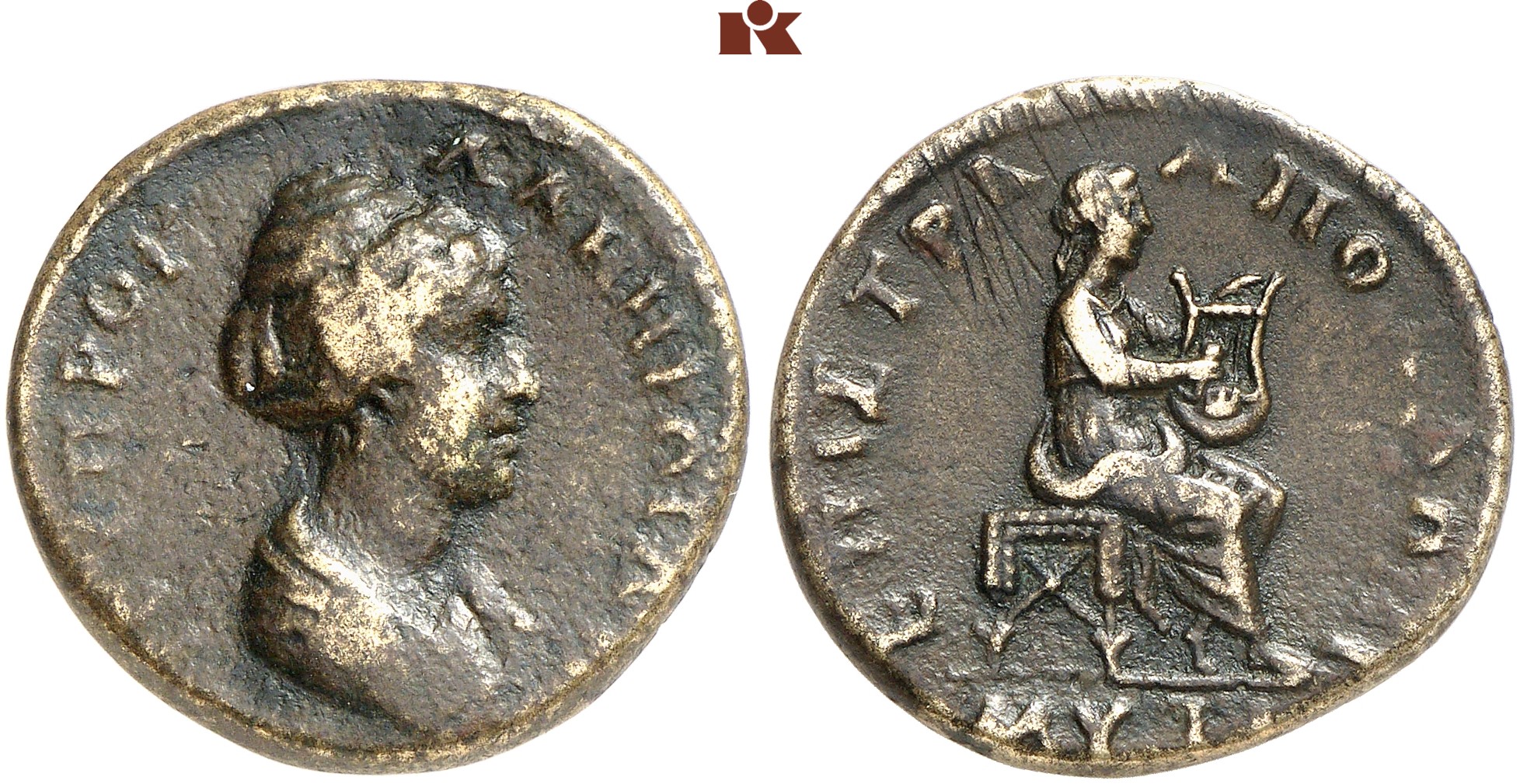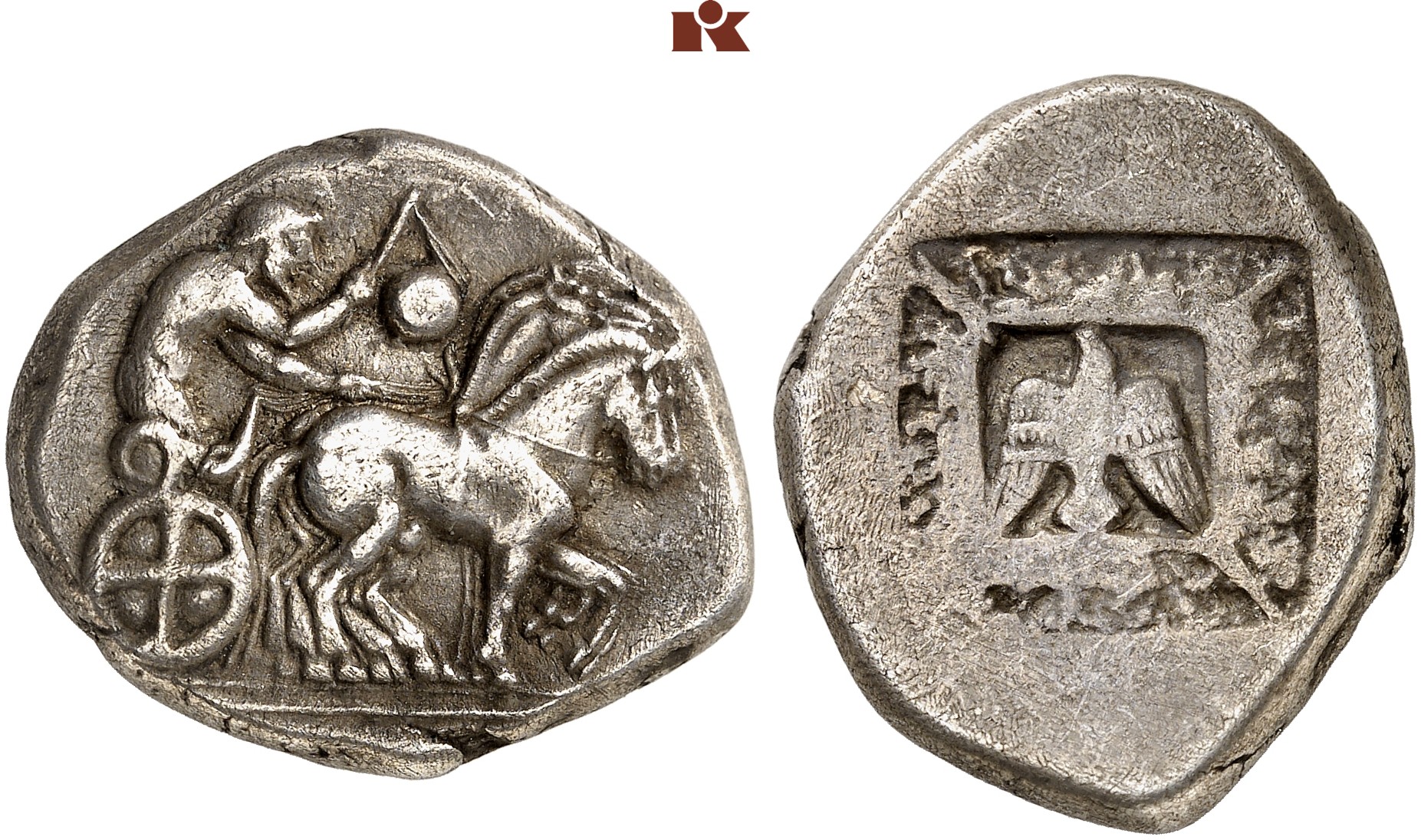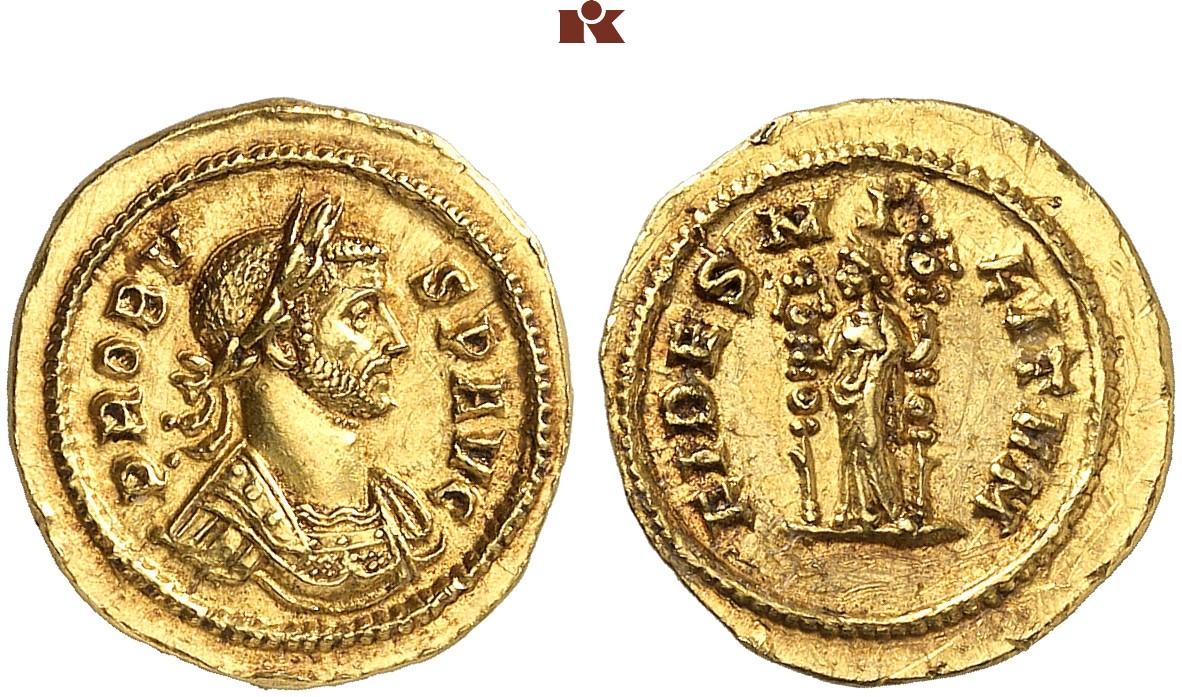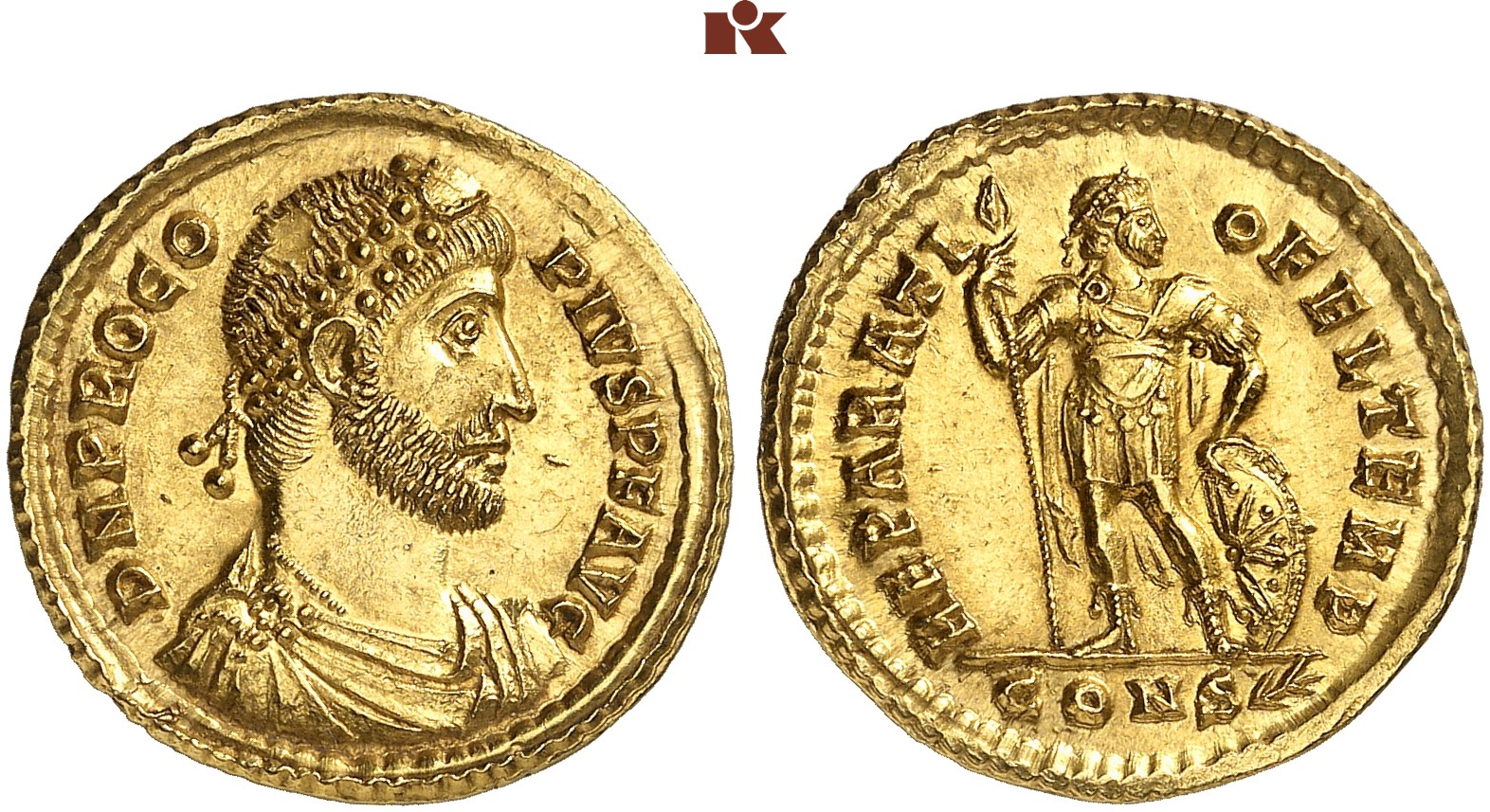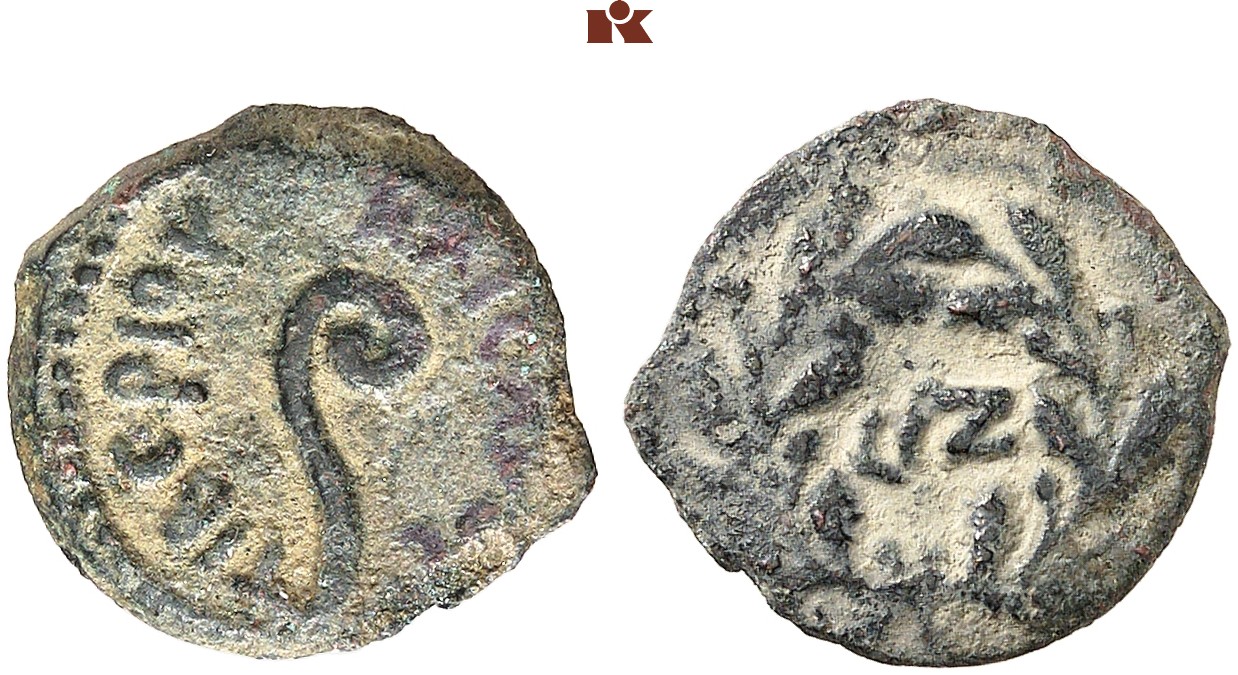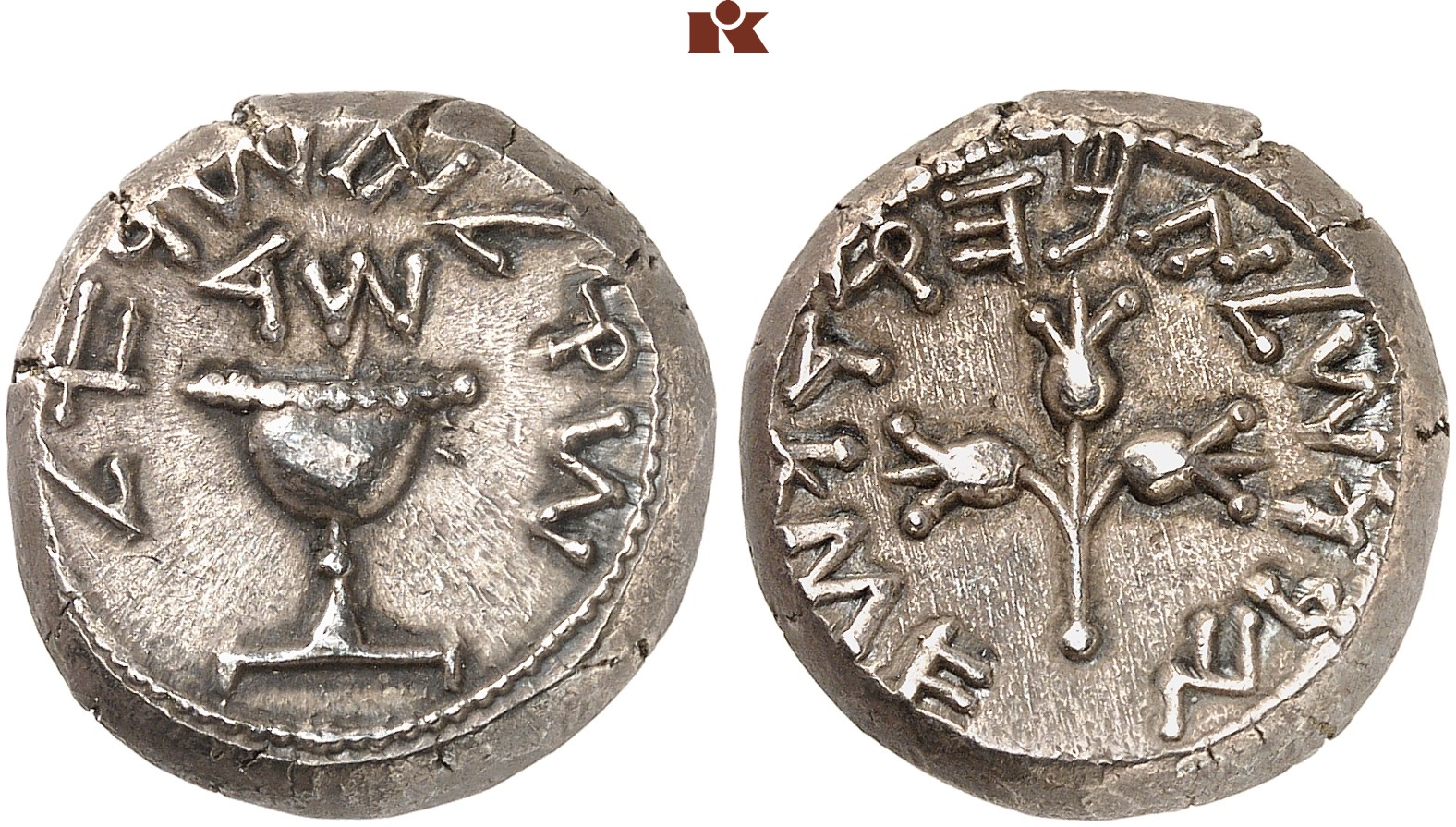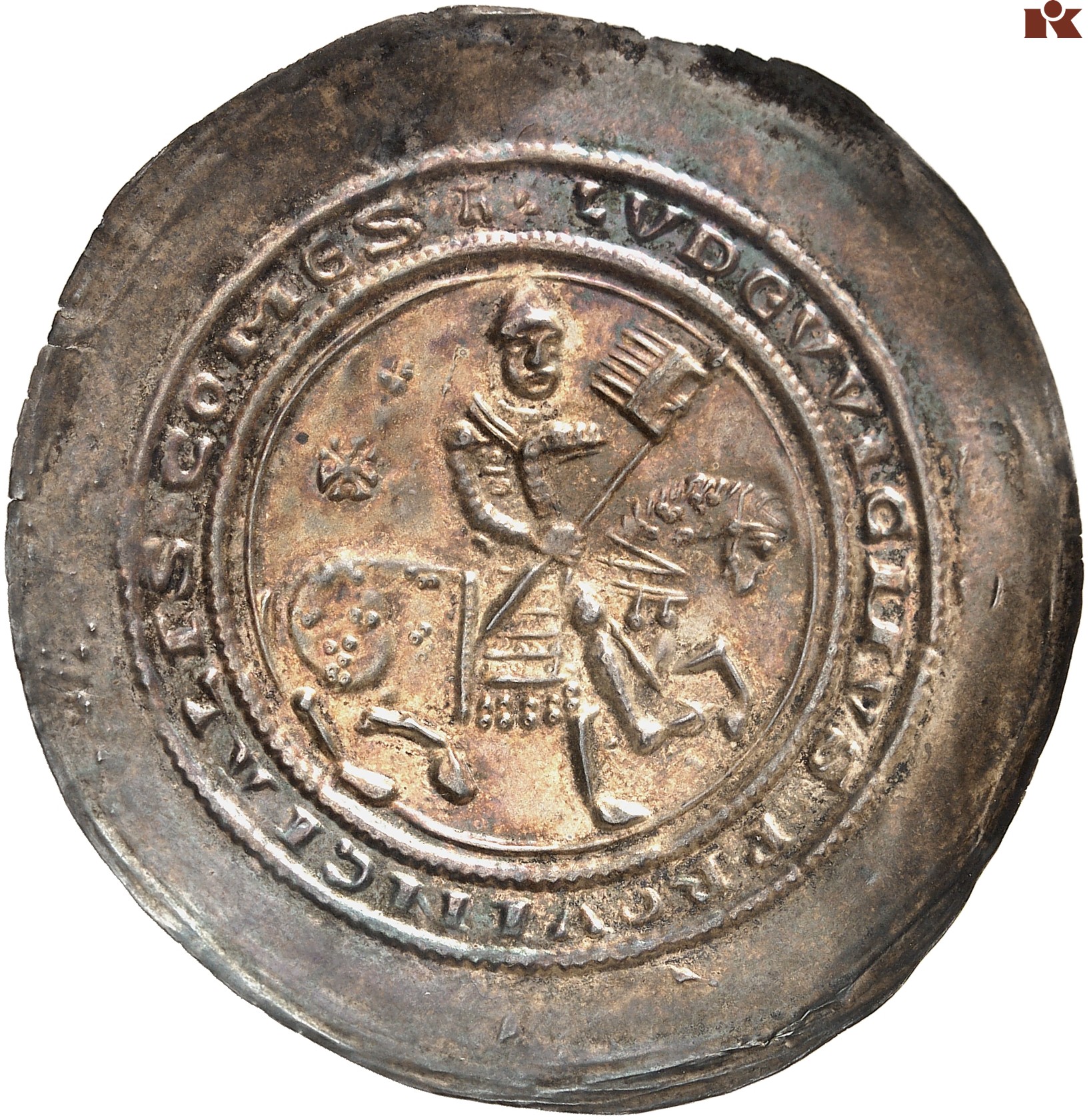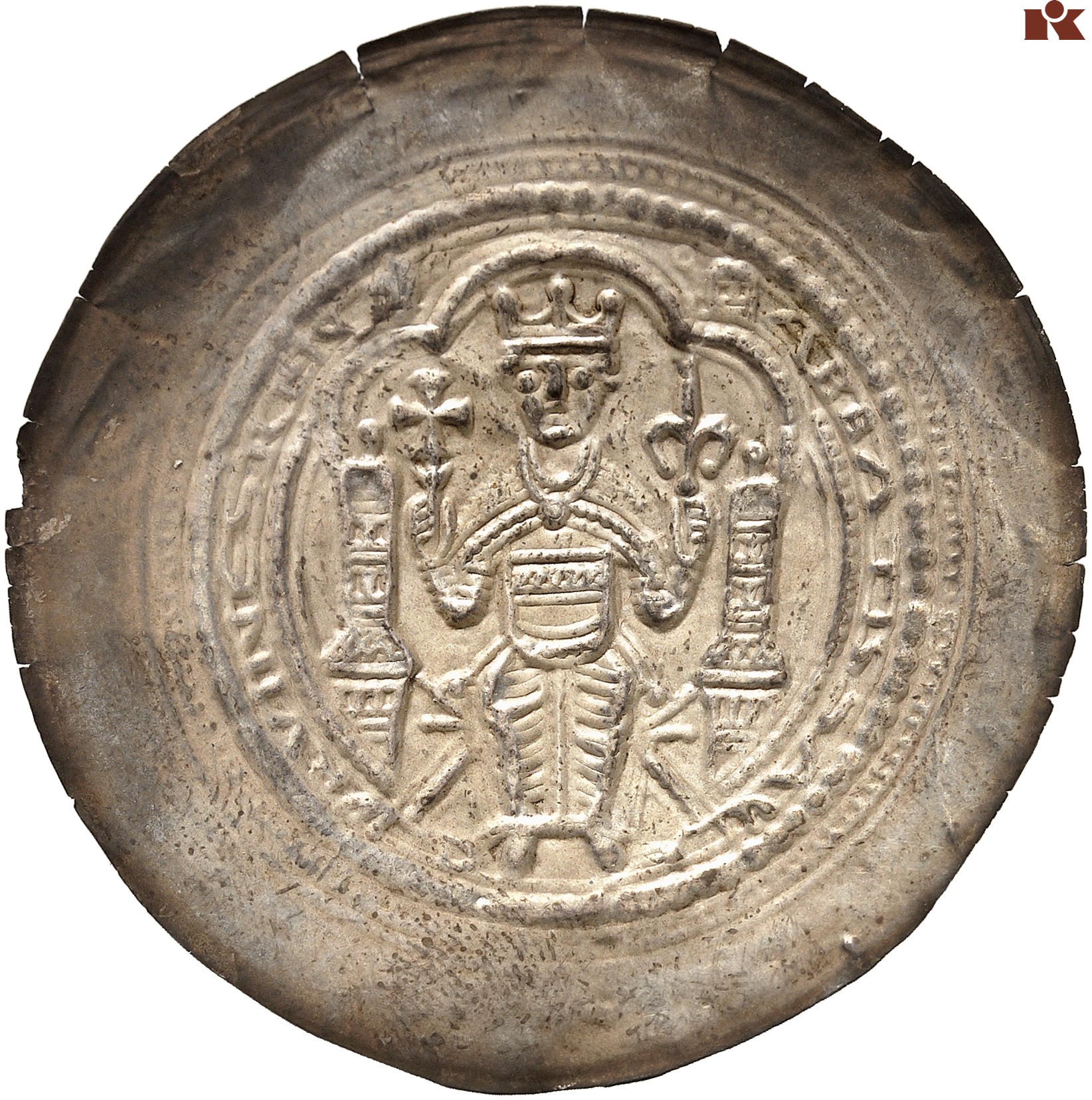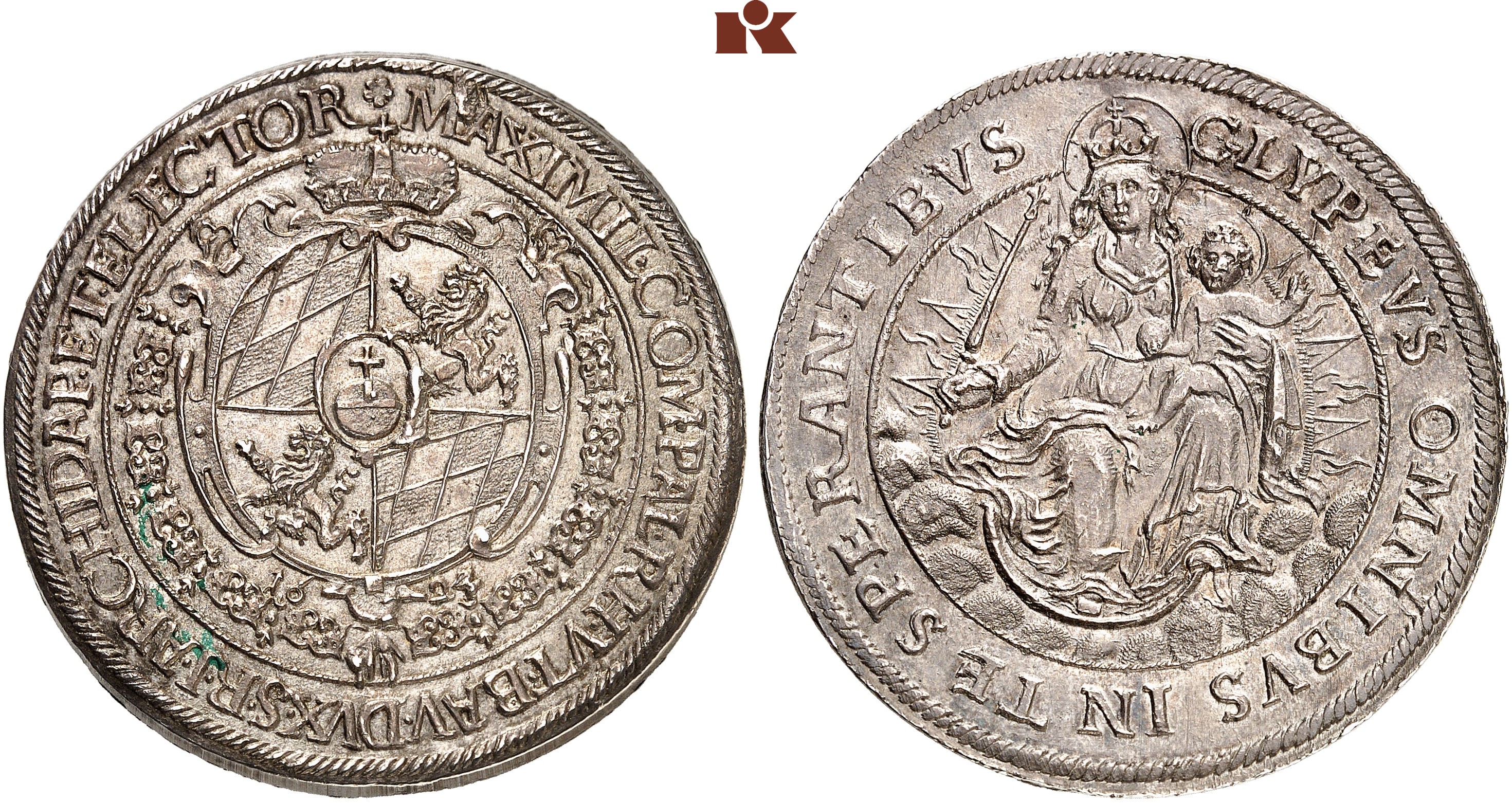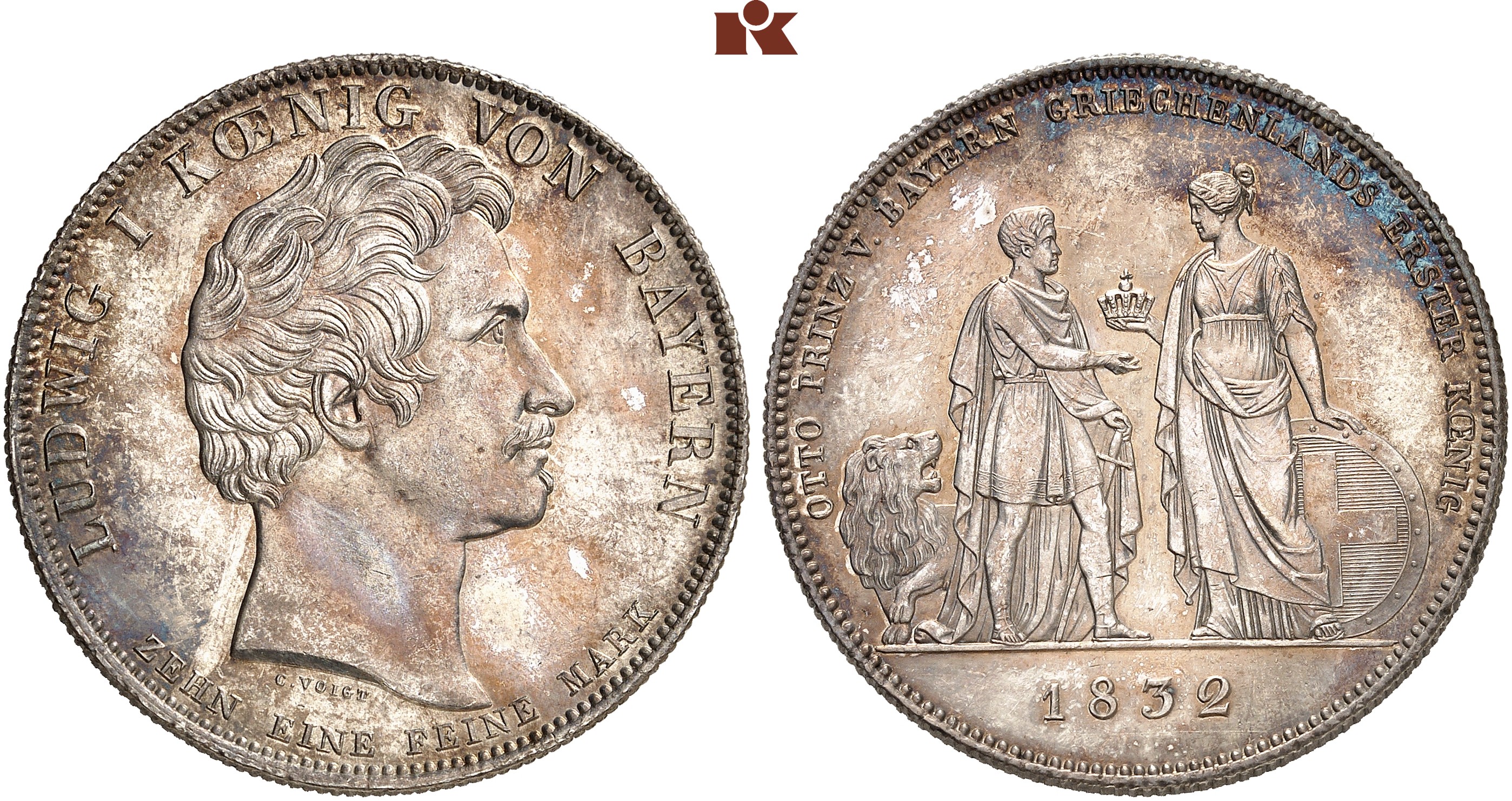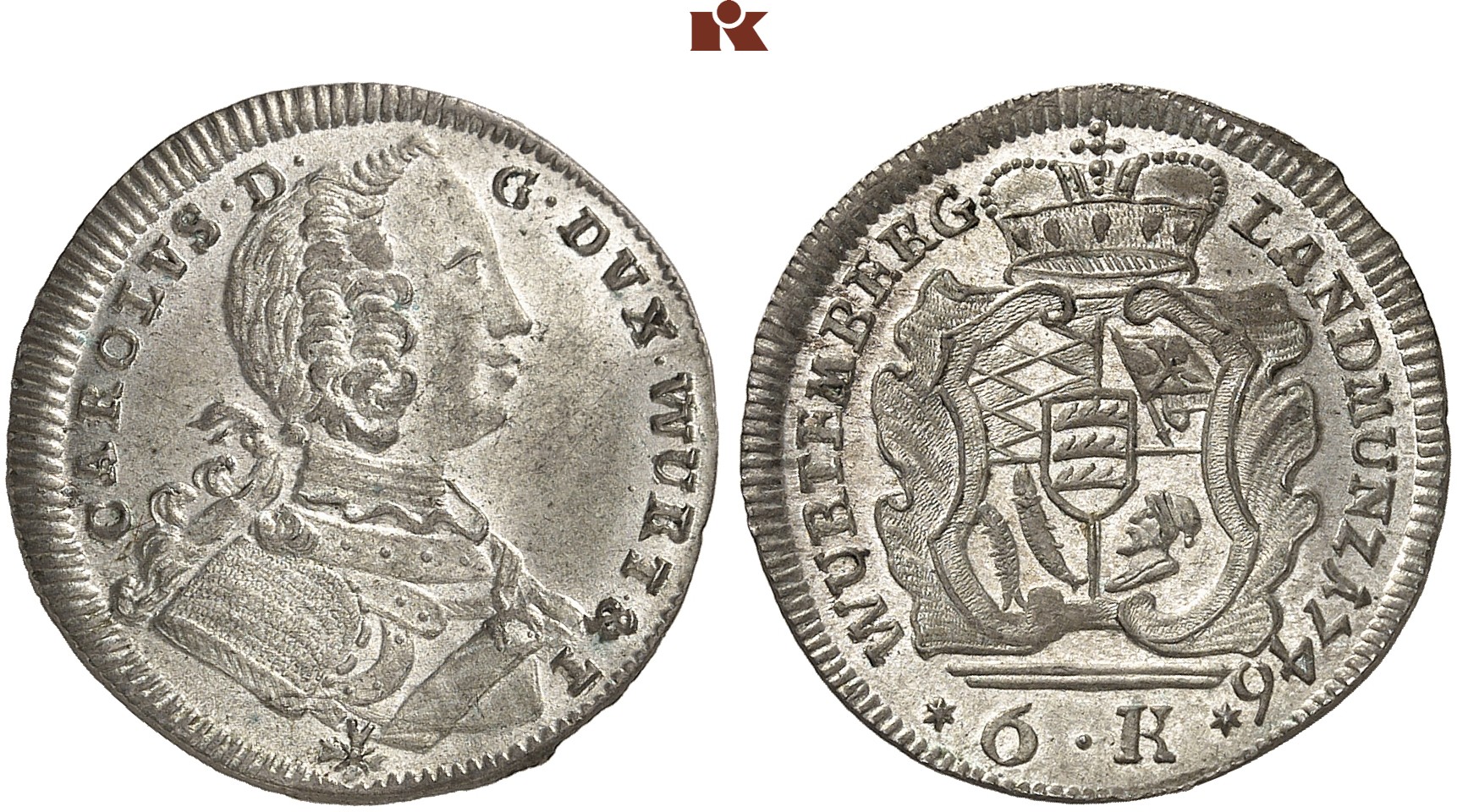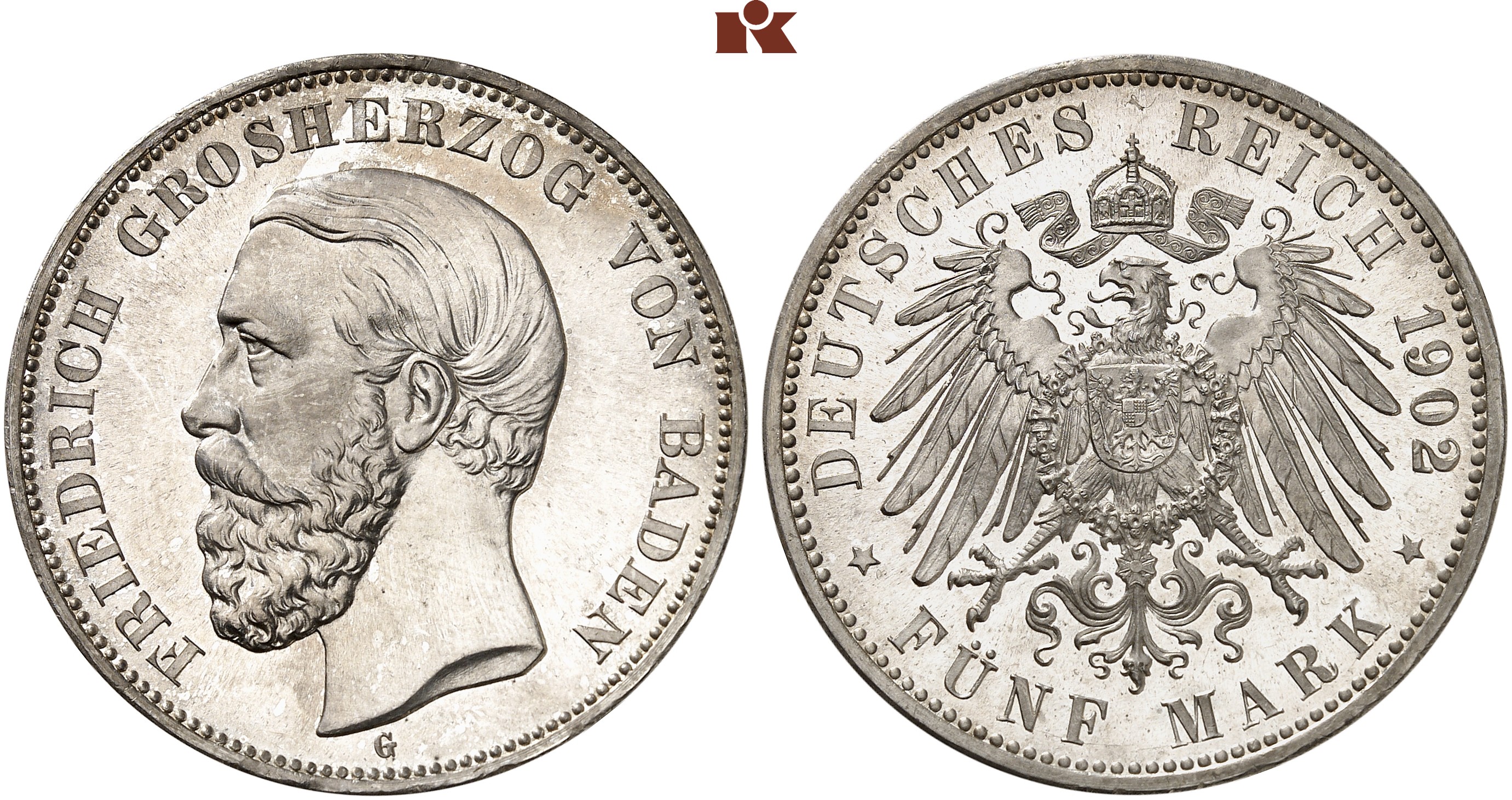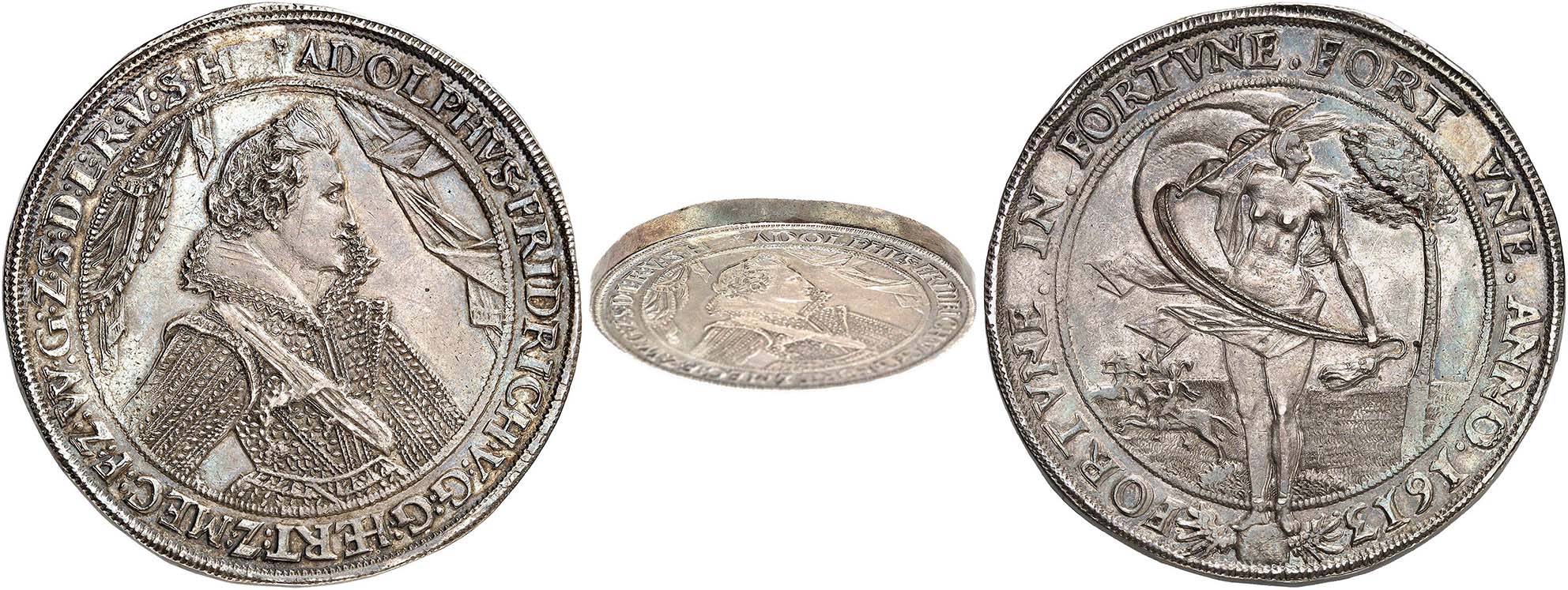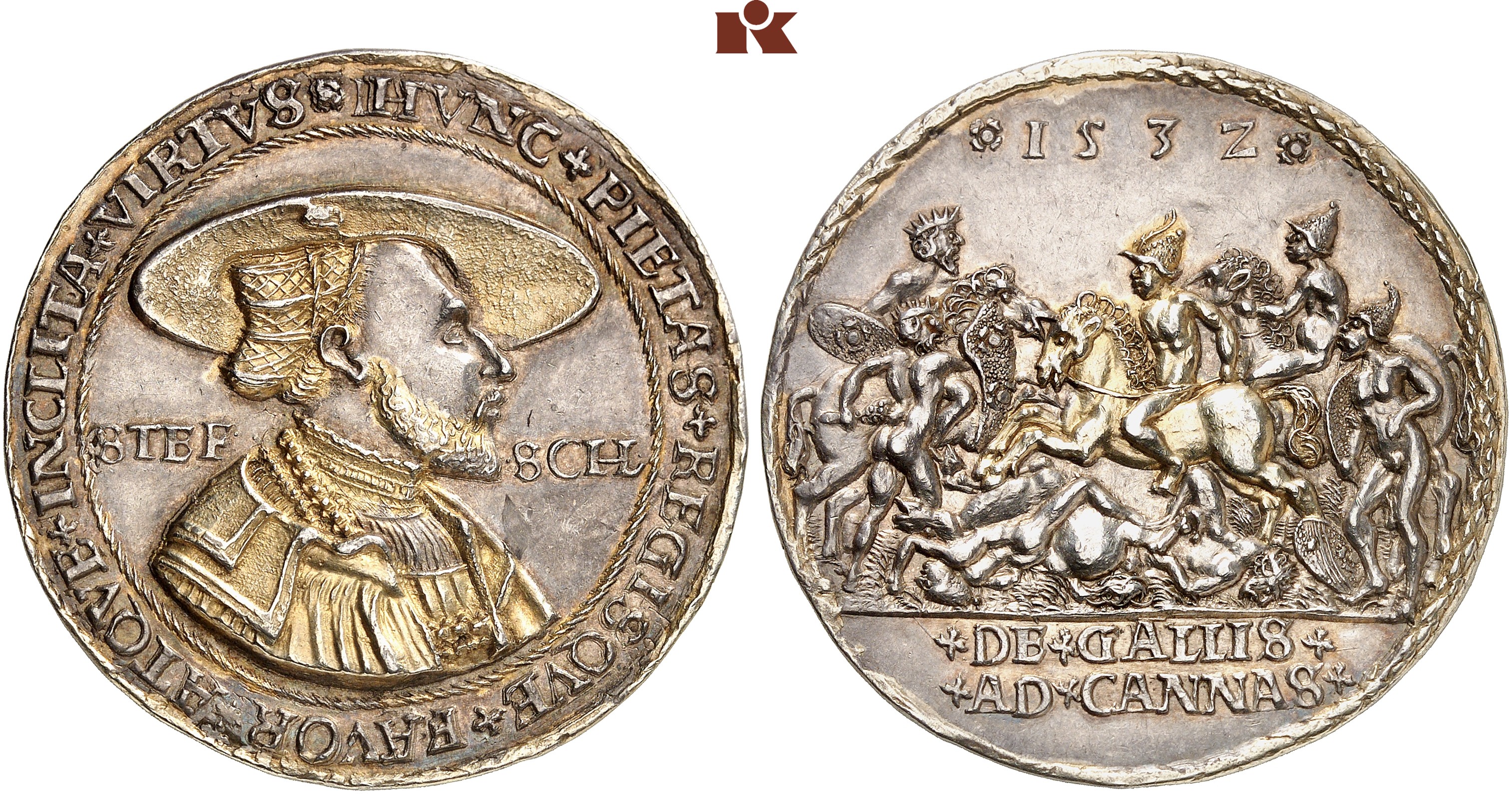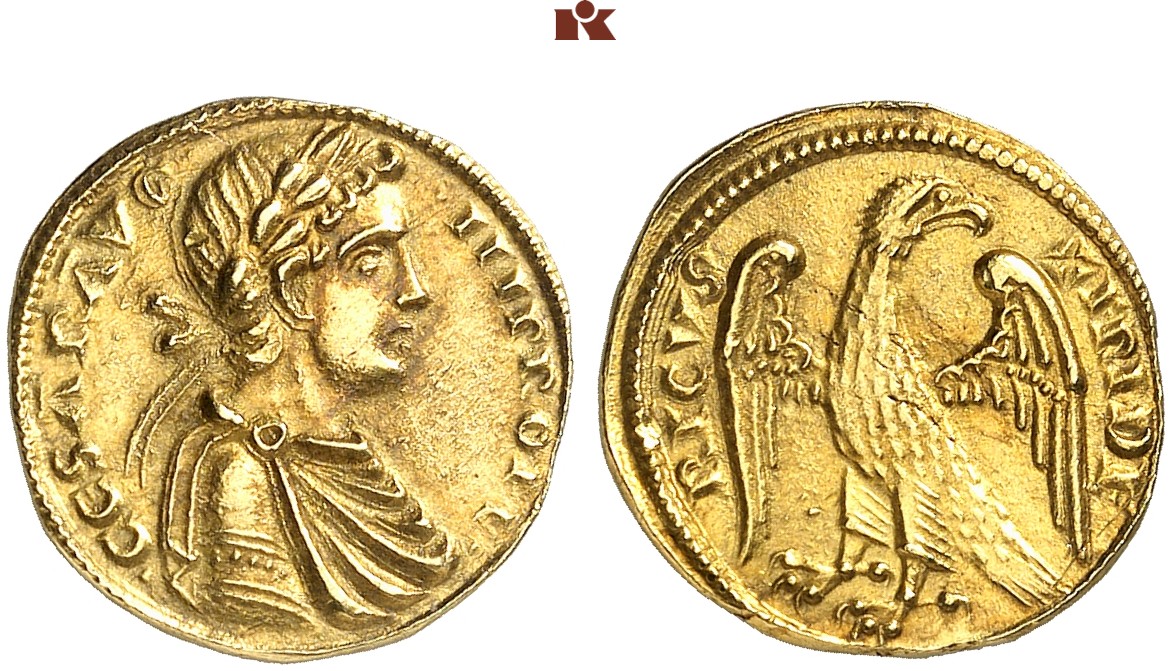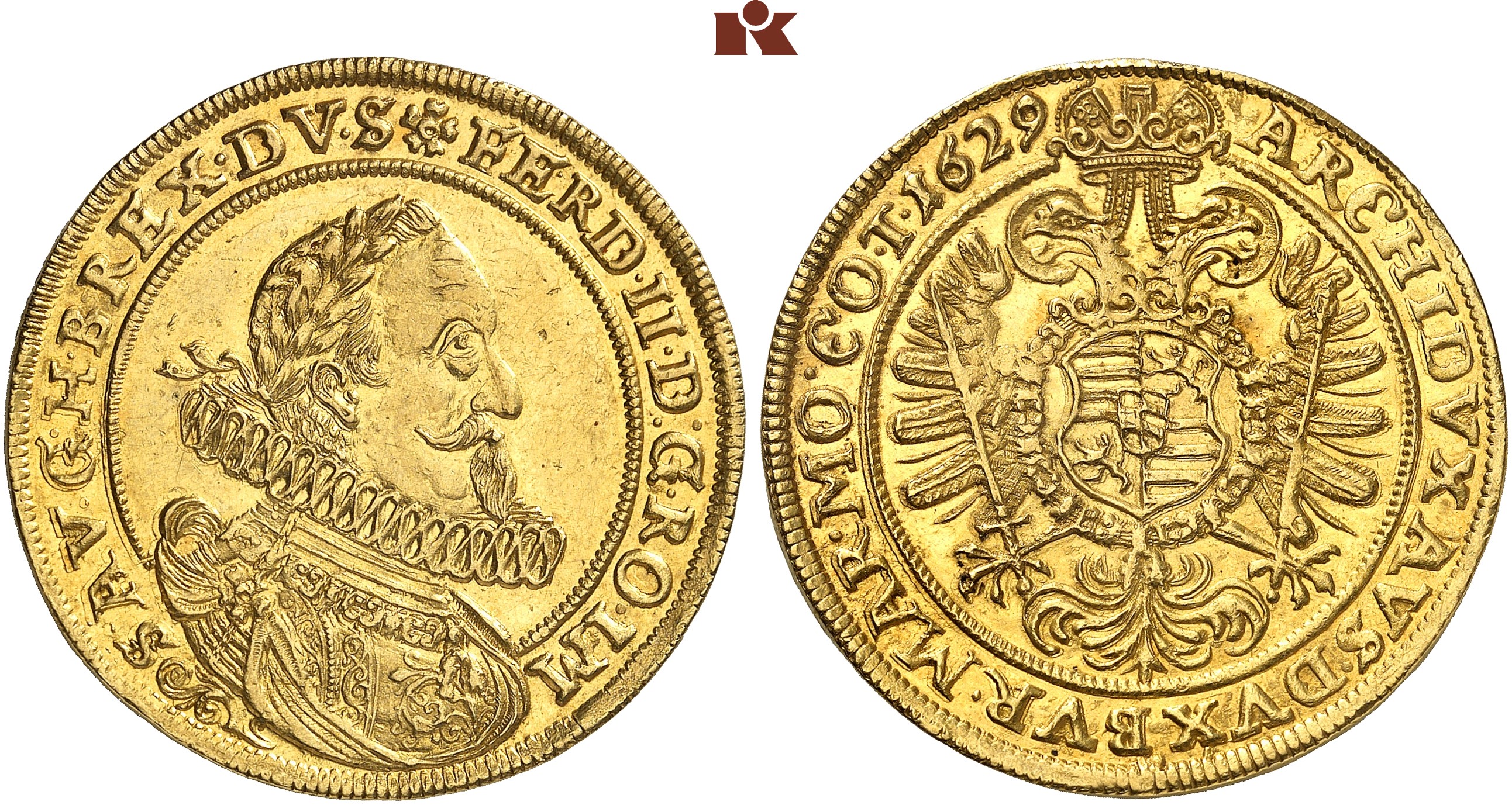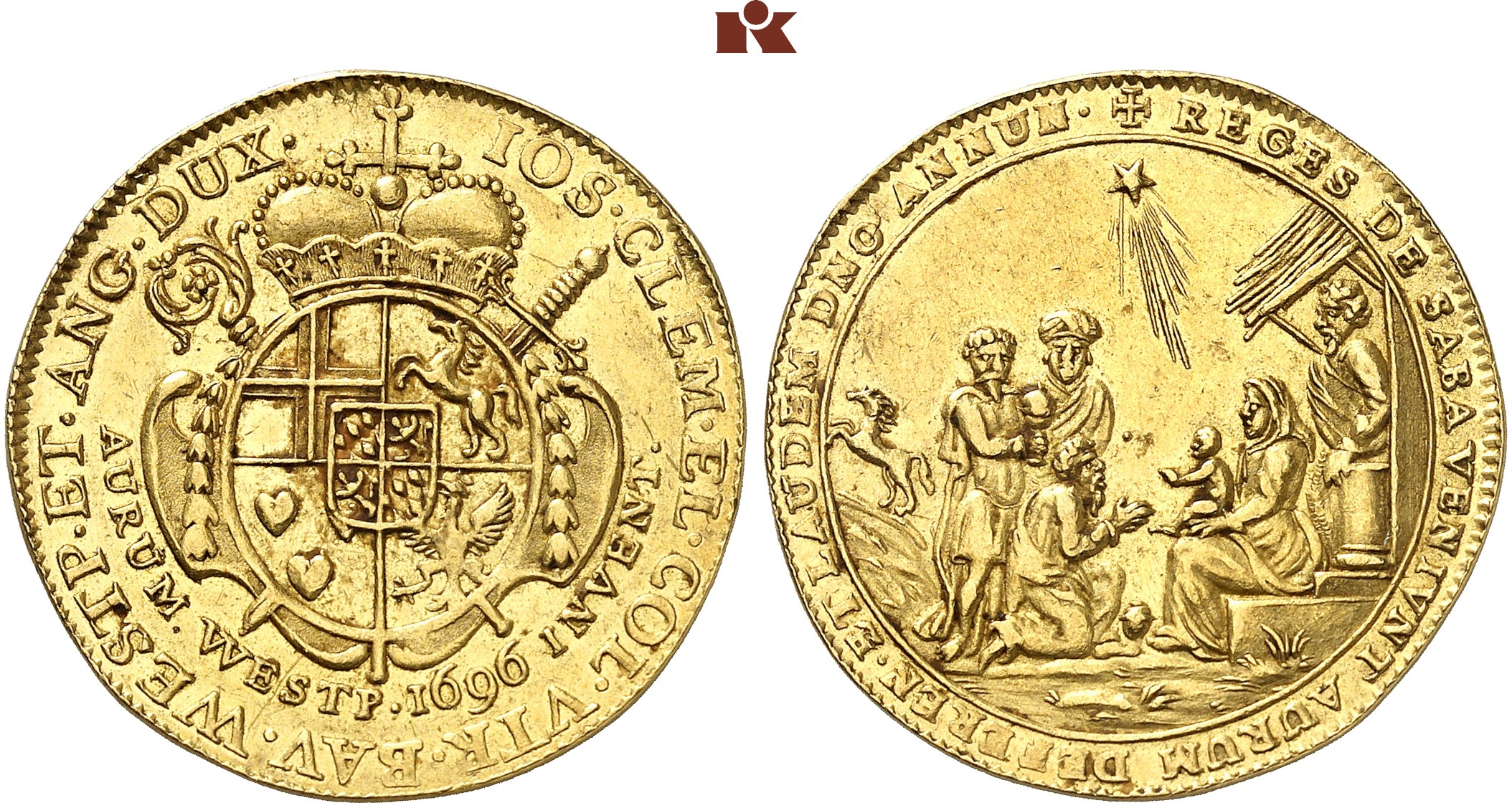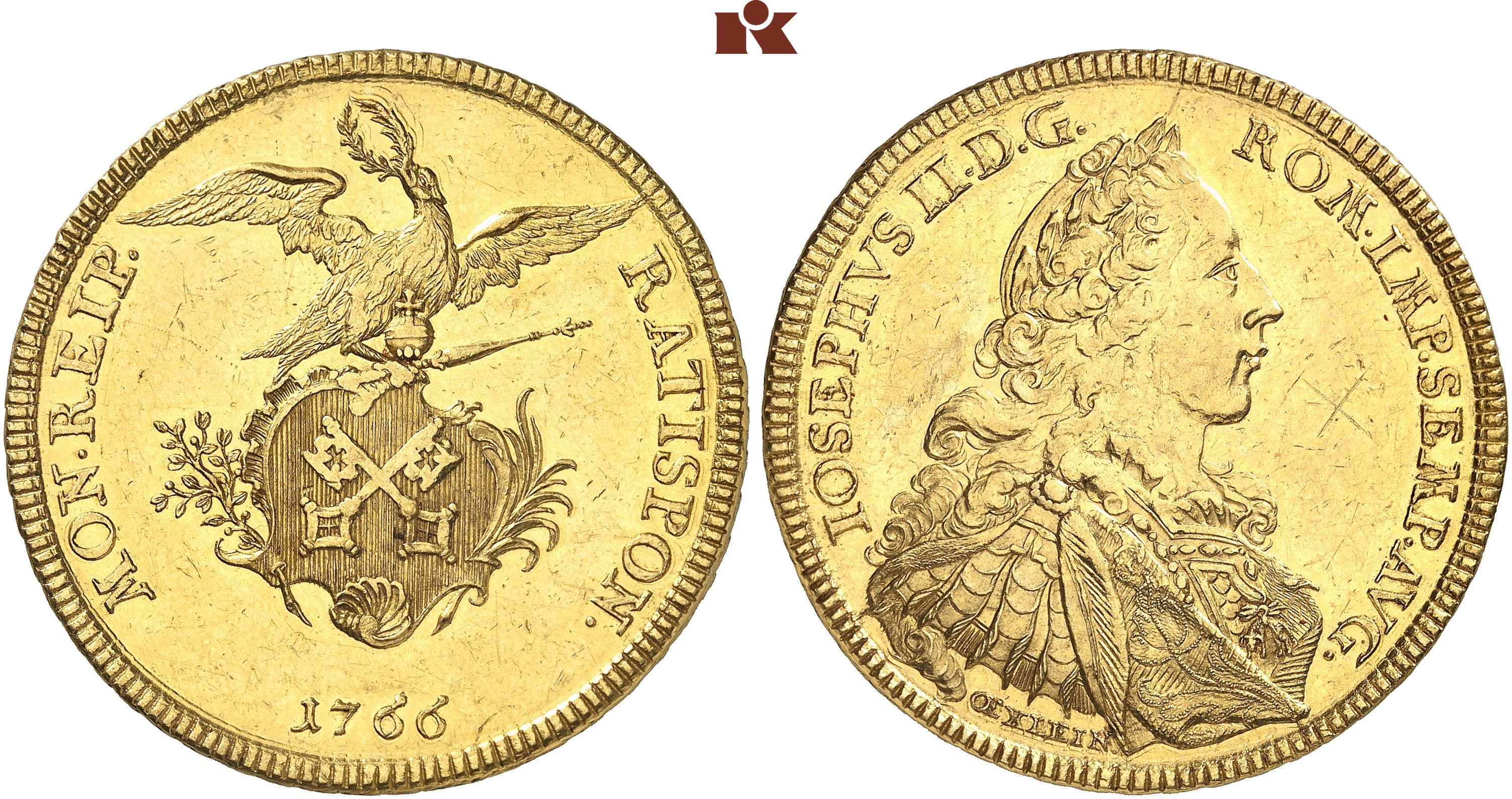The coin market is stable - even in times of crisis
27. March 2020 11:15
The Künker Spring Auction Sales took place in the middle of the height of the worldwide corona crisis and under constantly tightened security requirements. The concern was enormous: How would the collectors react? In brief: The mood was positive and participation was high overall. For the more than 6,500 lots, Künker realized over 10 million euros surpassing the estimate for the sales that had been set at around 6.7 million euros.
At the beginning of March, the Künker team was ready for the upcoming Numismata Munich, at that time the first restrictions were imposed on major events, particularly in Munich. The team weighed up the options: Participate in Numismata? Yes or no? And what about viewing of the Spring Auction lots in Munich? They decided to cancel the participation in the Numismata with mixed feelings, in order to protect the employees and not to endanger the upcoming auctions. The risk of an infection and having to be quarantined seemed too great. Künker feels an obligation to the collectors and consignors to protect their interests. For this reason, the lot viewing was not cancelled, but supervised by the Munich colleagues - naturally in compliance with all hygiene regulations.
The following days brought new safety regulations. The international collectors and dealers, who combined their trip with a visit to the Numismata and participation in the Künker auction, were also alarmed. On March 11th, the United States of America issued an entry ban on all those who had been in the European Union. The inner-European borders were also gradually closed. So it was clear that guests from abroad had to return home as soon as possible. In Germany, too, the situation was tense and nobody knew what measures would be taken. The question for the Künker Auction House was how to guarantee participation in the auctions.
On Thursday evening - three days before the start of the floor auction sale - the decision was made to hold the auction despite the circumstances. However, solutions had already been developed that could take effect if the worst came to the worst. For example, live bidding via the Internet was permitted for the first time at a Künker floor auction sale. In less than three days, the procedure was implemented, employees trained and the international customers informed.
Over the weekend, the constantly updated instructions were implemented so that the auction could begin on Monday morning under special conditions: The seating was set up in such a way that the rules of distance were observed, signs with the hygiene regulations were attached and disinfectant dispensers were set up. Every employee, every security guard and every guest was listed by name and asked about their state of health.
The first day of the auction ended at 6.30 pm, the team was satisfied, the first day was over. In the evening, the news came that the state of Lower Saxony had issued a ban on events for both public and private events. What next? Plan C had to work now. Plan C meant packing up the necessary equipment and moving into the office. Planned, said, done. On Tuesday morning, the auction started on schedule in Künkers viewing room, with no public access. Künker employees served the customers on the telephone, the auctioneer took the pre-bids and many other bidders took advantage of the opportunity for live bidding via the Internet. The official orders were of course also implemented and continuously monitored in the company's own building.
The five-day auction was held under special conditions, but already on the first auction evening it became apparent that the demand for interesting coins was rising rather than falling despite the current situation. Thanks to foresighted planning and flexibility, Künker was able to make its Spring Auction Sales a complete success despite the worldwide corona crisis: With a total estimate of around 6.7 million euros, the total hammer price reached more than 10 million euros (not including buyer’s premium).
In this issue, we will not, for once, limit ourselves to the expensive individual items, but rather provide a picture of the overall market situation - especially in the medium price segment.
You will find information on the following areas
- Collection Dr. W. R.: Coins from Asia Minor and Cyprus
- Big prices also for small coins
- A selection of top results from the coins from the ancient world
- The Samel Collection: 340,000 euros for a piece of the Jerusalem Temple Treasure
- Bracteates in finest quality
- Special Collection of Bavaria
- The Eberhard Link Collection: Siege Coins
- Special Collection of Württemberg
- Currently in high demand: Eastern European pieces
- Another look at the coins of the German Empire
- Finally: a few tips
The Dr. W. R. Collection: Coins from Asia Minor and Cyprus
The Dr. W. R. collection was at the beginning of auction 333 with coins of the ancient world. This was an ensemble of coin types from Asia Minor that had been gathered with a great deal of knowledge. Rare bronze coins with a fine patina in above-average condition, this was the main part of this collection. The estimates started at 25 euros. Of the 610 pieces in the collection, not a single one is unsold!
Especially attractive coins brought prices that were much higher as their estimate. The first example is an extremely rare bronze coin from the city of Mytilene on Lesvos. Lesbos is known all over the world for Sappho. And it was exactly this famous poetess that was on the reverse of the coin. The result: The hammer price of 3,600 euros with an estimate of 1,000 euros - and this although the obverse of the coinage was "only" almost beautiful.
As a second example, we present an extremely rare coin, probably not noticed by many in the catalogue, too familiar is the representation: It was a drachma (!) of the city of Myrina - in best style and perfect condition. The piece, estimated at 750 euros, achieved 6,750 euros.
For the cover of auction 333 the Künker team had chosen an extremely rare Augustan large bronze from Kos. A good decision. It became the most expensive lot in the Dr. W. R. Collection. The coin climbed from an estimate of 2,500 euros to an impressive hammer price of 16,000 euros.
Big prices also for small coins
For many years, small coins were an area that collectors chose when they had to preserve their budget. In the meantime, small coins can also call for impressive hammer prices, and this was also the case in auction 333, where a perfect 1/16th stater from the Phoenician city of Sidon came from the collection of a Northern German ancient coin connoisseur. Unusual was above all its full centering. The result: It increased its estimate tenfold from 150 euros and changed hands with 1,500 euros.
That this was not just a mistake became evident just one number later. From the Phoibos collection came a 1/4 Stater by Tyros with dolphin and purple snail on the front. He also brought more than ten times as much: 4.200 euros with an estimate of 400 euros.
Some top results from the coins of the ancient world
Of course we do not want to withhold the outstanding coins from you. Here are two leaders each from the field of Greek and Roman coins:
- Olynthos (Macedonia). Tetradrachm, approx. 500. Very fine. Estimate: 5,000 euros, Hammer price: 15,000 euros
- Cyrene (Cyrenaica). Didrachme, 308-277. Extremely fine. Estimate: 1,250 euros, Hammer price: 10,000 euros
- Probus. Gold quinar, 281/282. Extremely fine. Estimate: 15,000 euros, Hammer price: 38,000 euros
- Procopius. Solidus, 365/366. Extremely fine. Estimate: 50,000 euros, Hammer price: 65,000 euros
The Samel Collection: 340,000 euros for a piece of the Jerusalem Temple Treasure
It was highly expected how the prices for the coins of the Samel collection would develop. Especially for Jewish coins there are traditionally important collectors in the United States. Thanks to live-bidding there was not a big difference to any floor auction. Whoever wanted to bid sat at home at the computer or on the telephone instead of in the auction room. This was shown by the excellent final results.
The most expensive coin was a unique coin, which was minted on the order of Titus in October 70 from the gold of the stolen temple treasure. Johannes Nollé had succeeded in reconstructing the history of this highly symbolic piece of gold. And so this unique coin climbed from 30,000 euros to more than ten times that amount, namely an impressive 340,000 euros!
Other rarities also brought outstanding prizes: A Yehud coin with the portrait of Ptolemy I. 48,000 euros (estimate: 12,500 euros), the rare coin with the unique representation of the seven-armed candelabra 65,000 euros (estimate: 25,000 euros) and a shekel from year 4 of the First Jewish War 36,000 euros (estimate: 12,500 euros).
But we want to look at the whole price spectrum in this review. So let's take a look at a frequent minting, which many coin collectors either already have in their collection or would love to have: Five copies of the Prutah of Pontius Pilate with the Lituus from the year 30/31, i.e. from the year assumed to be the year of Christ's death, were included in the Samel collection. The five coins were estimated at a total of 275 euros - from 25 to 100 euros - a very reasonable price. However, more than half of them were "only" beautiful or had faults. The surcharge was more than five times as much, namely 1,580 euros - from 140 for a piece in "fine" to 460 euros for a piece in "almost very fine".
Bracteates in finest quality
Auction 335 began with medieval coins of the finest quality from the collection of a passionate numismatist. And, as expected, the interest was great. Not a single piece went unsold!
Top seller was a unique bracteate of the abbess Gertrud von Eschwege. It brought 17,000 euros (Estimate: 10,000 euros) and even overtook the equestrian bracteate from Gotha with the representation of the Landgrave of Thuringia in full armour on his warhorse, which is considered the highlight of the Romanesque stamp cutting art. It achieved 13,000 euros.
In contrast, a very rare bracteate from Reichenau Abbey, minted in Radolfzell, seems almost inconspicuous. The piece, unusually well preserved for this issue, climbed from 1,000 to 4,600 euros.
Special Collection from Bavaria
Künker was able to offer several special collections in its Spring Auction Sales. One of them - the Special Collection from Bavaria - we would like to show how healthy the market for classic collector's coins is.
Of course, this collection also contained a number of rarities, but the majority of the objects consisted of nice Talers in fine condition. Estimates started at 25 euros and were mostly in the three-digit range. Of the 328 lots, only one is unsold. The total estimate of around 163,000 euros rose to a total hammer price of nearly 254,000 euros.
The rarities such as the silver cast medal of Duke Wilhelm IV. from 1535, which is sold at 11,000 euros what is exactly eleven times of its estimate, contributed to this. But also, quite ordinary Reichstalers achieved high prices since their conditions were mostly well above average. At this point we would like to mention as an example a Reichstaler of the year 1624 in almost extremely fine, which climbed from 400 to 1,300 euros.
Among collectors, the historical taler of Ludwig I is probably one of the most popular Bavarian coins. Three specimens of the not so rare taler, which deals with Otto's election as King of Greece in 1832, were sold in the auction. The extremely fine piece fetched 280 euros, the almost uncirculated piece 600 euros, and the almost uncirculated specimen with a magnificent patina even 1,300 euros.
The Eberhard Link Collection: Siege Coins
Already over the course of some auctions, additional parts of the Eberhard Link collection have been dissolved. Auction 335 and 336 contained the siege coins. These were historically highly interesting pieces, whose estimates are mostly in the three-digit range and Eberhard Link selected those with great expertise and a good eye for condition. No wonder that many collectors bid on these coins.
The great rarities in the collection rose to as much as 7,000 euros, such as a one-sided klippe, which was created during the siege of Landau in 1702, and which one can still see clearly that it was previously a plate rim (estimate: 2,500 euros). Also a Sechsteltaler of Mainz from 1689, emergency money produced by the French commander during the siege by the imperial troops (estimate: 2,500 euros).
Nevertheless, let us take a closer look at the whole series of Mainz emergency money: There were nine lots. Their estimates were between 100 and 2,500 euros. In total, the estimates add up to 8,200 euros, which is an average of 911 euros per lot. The overall result was 26,400 euros, an average of 2,933 euros per coin, more than three times. The most impressive increase achieved the lot with the lowest estimate of 100 euros: a one-sided pattern for a copper penny was sold at 2,400 Euros.
Special Collection Württemberg
In recent years, a very active collector community has developed for the Württemberg collection area. And they also bid strongly at auction 335, which contained an impressive collection with many rarities. The nearly 150 lots were estimated at a total of 138,325 Euros. Not a single one remained unsold. The total hammer price was 256,855 Euros, almost double the estimate.
Of course the great rarities contributed their part. A very rare half Reichstaler of Johann Friedrich, minted 1623 in Christophstal in very fine climbed from 3.000 to 10.000 euros. An unusually well-preserved Reichstaler from the same prince from the same mint, but a year later even realized four times his estimate of 6,000 euros: 24,000 euros. And the coins of the 18th century also brought impressive prices: For example, a magnificent Reichstaler Karl Eugens from 1744 from Stuttgart was knocked down for 20,000 euros at an estimate of 6,000 euros.
But let us take a look at the coins with the more modest estimates: A tipper-24 cruiser from Stuttgart in 1622 was valued at 400 euros. The condition was for this coin type with very fine to extremely fine extraordinary, therefore a collector could only win it over with 1.700 euros. Similarly a 6 Kreuzer 1746 from Stuttgart in mint condition. The actually not rare piece was estimated at 250 euros, but was then worth 1,200 euros to a special collector.
Let us complete this picture with a look at auction 336, where gold coins from Württemberg were offered. The top item was a double ducat from Stuttgart in 1623, which shows the appointment of Johann Friedrich as colonel of the Swabian district. It rose from 10,000 to 29,000 euros.
Currently in high demand: Eastern European pieces
Poland, Hungary, the Czech Republic, all these countries have an incredibly active collector community, and coins from these areas therefore fetch excellent prices. We illustrate this on four Czechoslovak ducats with the portrait of Charles IV, which were created between 1979 and 1982.
They are also a fantastic example of the high prices that rare coins from the recent past can fetch when demand exceeds supply. All three ducats were estimated at 300 euros, and they were sold at 1,200, 2,800, 1,700 and 1,400 euros.
Another look at the coins of the German Empire
Let us take a look at the most popular collecting area of the Germans, the coins of the German Empire. In order not to lose the overview, we limit ourselves to the silver coins of the Grand Duchy of Baden. 37 lots were offered with a total estimate of 59.925 euros, the estimates ranged from 50 euros to 10.000 euros. Not a single lot went unsold. Only three lots were knocked down to their estimate or below. The rest brought in some cases considerably more, especially if the coins were in exceptionally good condition. For example, two 5 Mark pieces of 1891 and 1902 respectively realized 16,000 and 13,000 euros. The total result amounted to 80,105 euros for this small but highly sought after group of coins.
Finally, a few top results
The coin market is stable despite Corona. Especially in times when people suddenly spend many more hours in their homes, collecting is very trendy.
So now is the best time for beautiful coins. And that is why we would like to conclude this review by showing you some particularly beautiful coins that have produced particularly high results.



